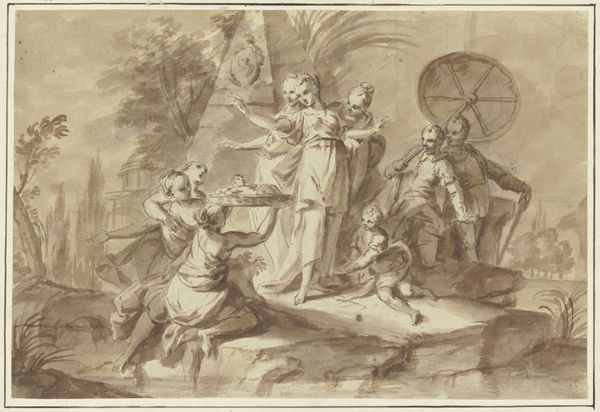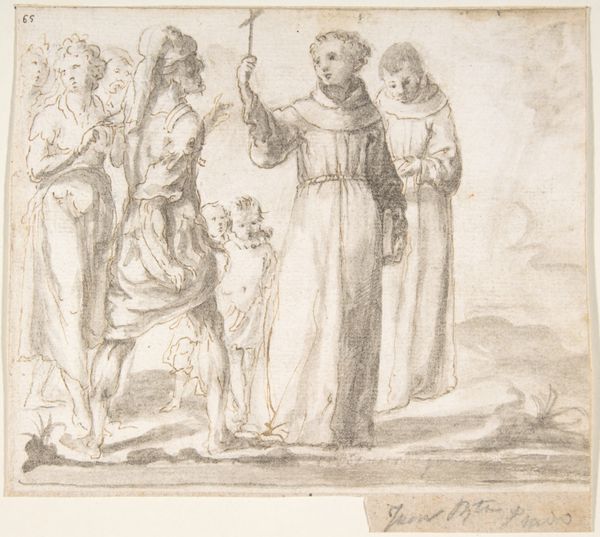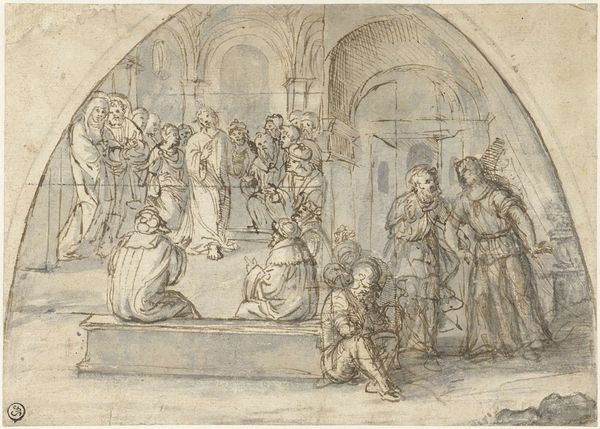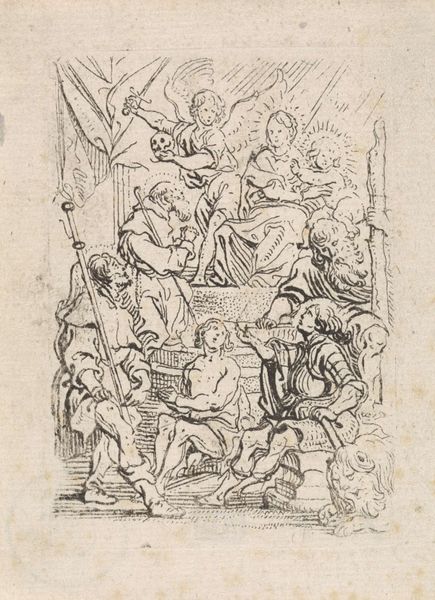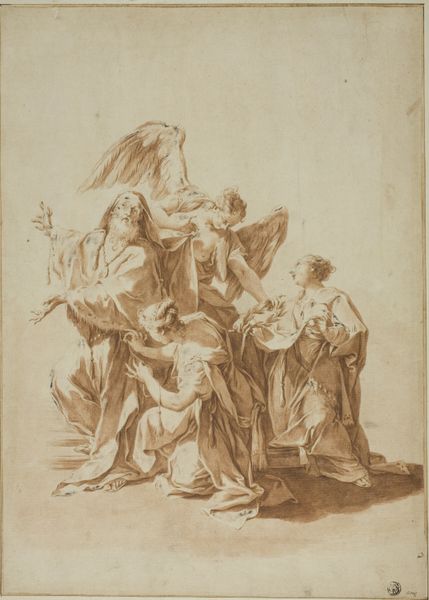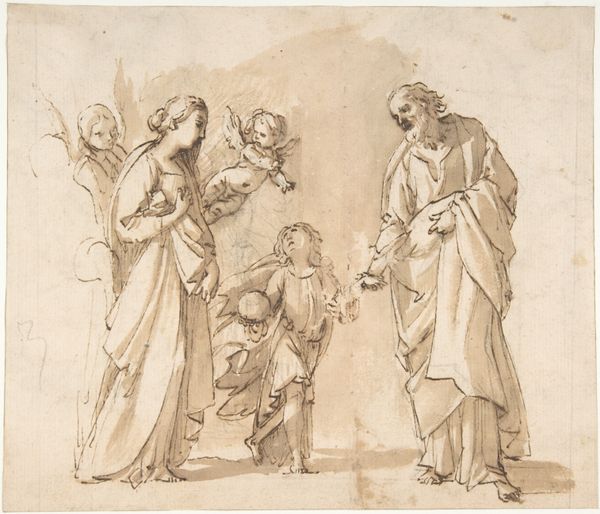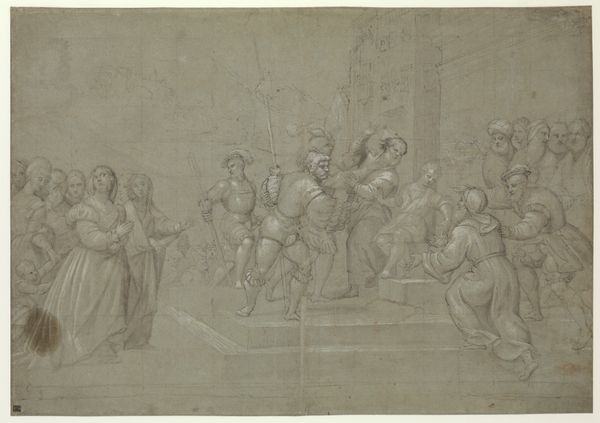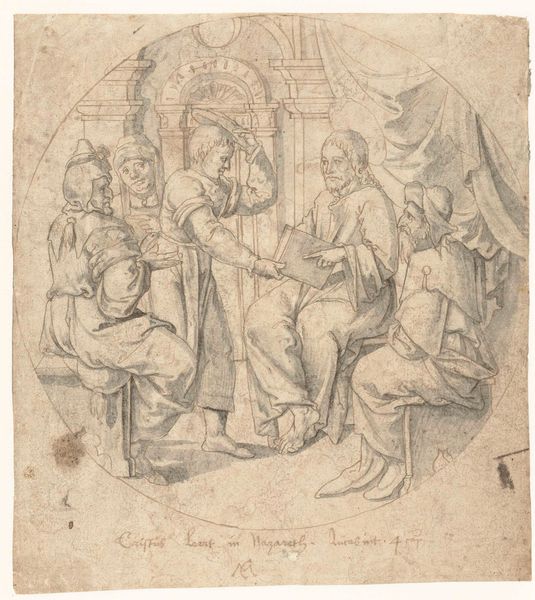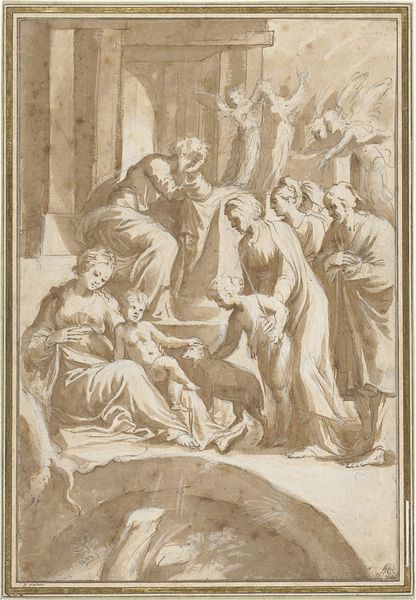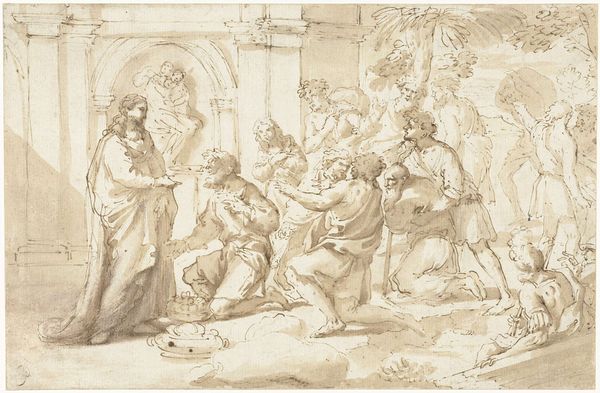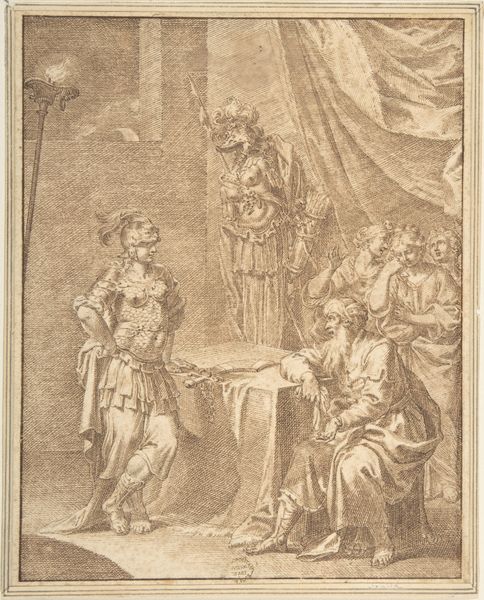
drawing, paper, ink, pencil
#
drawing
#
narrative-art
#
dutch-golden-age
#
pencil sketch
#
figuration
#
paper
#
ink
#
pencil
#
genre-painting
#
watercolor
#
realism
Dimensions: height 213 mm, width 281 mm
Copyright: Rijks Museum: Open Domain
Curator: This intriguing drawing is “The Prodigal Son in the Brothel,” by Jan Verkolje I, likely created between 1660 and 1693, using pen, pencil, and ink on paper. Editor: Well, it’s immediately clear that the monochromatic rendering and intricate lines generate a stark, theatrical ambiance, as though the subjects have been caught between frames of a narrative. Curator: Precisely. The composition pulls heavily from the biblical story. The prodigal son is seen here, squandering his inheritance amidst lavish surroundings, symbolized by the luxurious bedchamber and the figures reveling around the table. He has fallen from grace into earthly indulgence. Editor: Observe how Verkolje guides our eyes. The receding perspective—marked by the table running at an angle into depth—and the precise rendering of the figures’ draperies are sophisticated. Semiotically, the discarded coins near his feet speak of wasted wealth and moral decay, which the architectural background amplifies. Curator: Indeed, even the shadowed figure lurking in the corner offers a subtle symbolic echo of shame and lurking regret, hinting at his eventual repentance and return. This image embodies the moral narratives prevalent in Dutch Golden Age art, meant to act as cautionary tales against excessive and immoral behavior. The round shapes over the scenes suggest perhaps vanity? Editor: I note that the almost clinical, cool palette adds a chilling detachment to the narrative. There’s a careful attention to tonal gradations, from deep shadows to near-white highlights, establishing the drama and focusing the attention towards the center of the prodigal son and those actively enabling his behaviors. Curator: The scene underscores themes of temptation, fallibility, and the cyclical nature of redemption and transgression that resonates across cultures and time, inviting reflection on personal responsibility. The message still resonates. Editor: It shows a remarkable degree of stylistic finesse and symbolic loading to transmit the era's preoccupation with cautionary messaging—an elegant, though perhaps bleak, portrayal of consequence. The controlled, rather academic technique ironically undermines the unruly excess of the depicted moment.
Comments
No comments
Be the first to comment and join the conversation on the ultimate creative platform.

